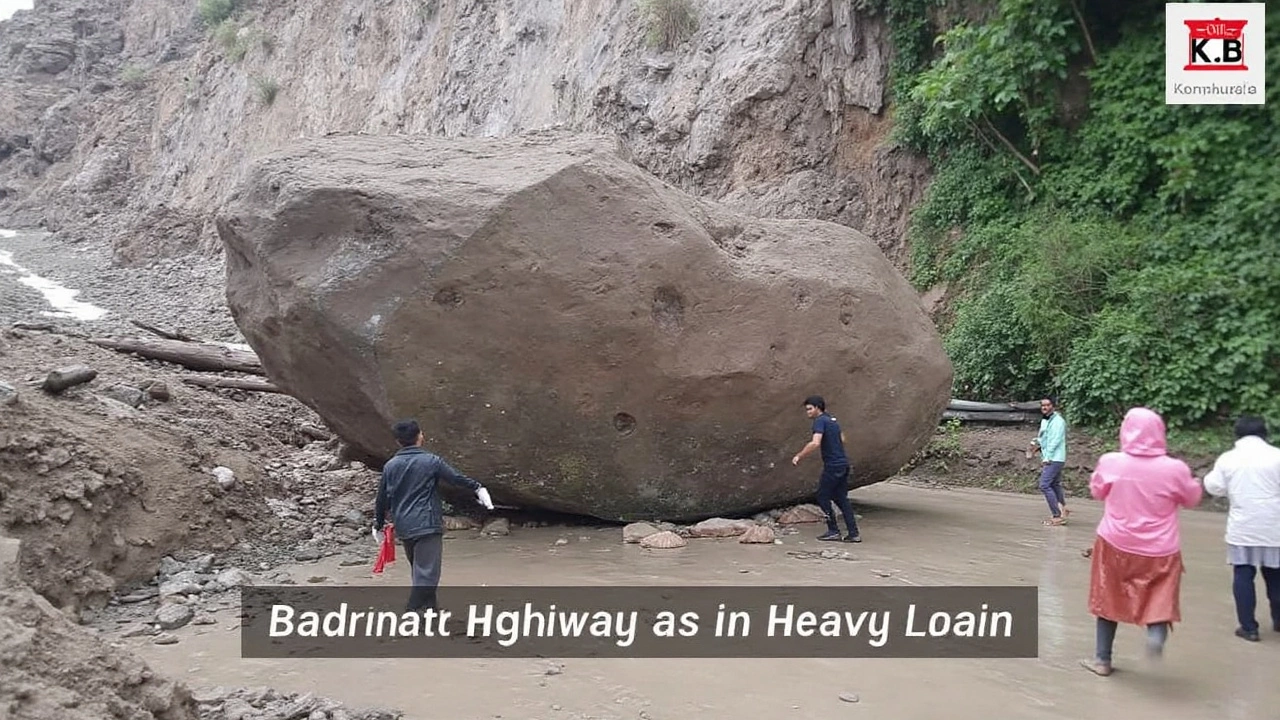Landslide Turns Vital Badrinath Highway Into a Muddy Trap
This latest landslide in Umatta hit with brutal force. Early in the morning, torrential monsoon rains brought down an avalanche of boulders and mud along the Badrinath Highway—the only practical route for devotees going to Badrinath Dham and for locals moving in the Chamoli district. Tons of debris buried vehicles, leaving passengers staring helplessly at thick layers of wet earth and unmoving rocks blocking every possible escape.
Cops from Chamoli had already posted warnings after locals called in with reports of rocks tumbling near the Badrish Hotel in Umatta. Soon after, the entire stretch fell silent except for the echo of falling rocks and worried voices. Rescue teams rushed to the site but found themselves facing a constant shower of new rockfalls. Clearing even a meter of highway became risky business, with each shove of a shovel greeted by new slides from the soaked slopes overhead.
The Badrinath Highway crew didn't have time on their side. Mud trapped dozens of vehicles, some carrying families making the pilgrimage, others just trying to get home. With visibility low and the danger zone growing wider, authorities moved fast, declaring a strict travel advisory. The SDRF and district administration barricaded entry points, put roadblocks in place, and pushed for rapid assessment on site. No one else would be allowed onto the unstable stretch until the weather cleared and danger receded.
Chaos and Scramble: Emergency Response and Ongoing Monsoon Trouble
The NHIDCL's inspection team arrived mid-morning, working with district officials to judge how much more of the highway might give way. Curves and hairpin bends along this road are never easy, but monsoon wipes out even the illusion of safety. Major traffic diversions came into effect for about two hours on July 5, meant more to keep curious onlookers away than to reassure stuck commuters. Social media filled up instantly with videos of swamped cars, ankle-deep mud, and rescue teams dodging sliding rocks.
For the SDRF personnel, it meant hours of digging, coaxing engines back to life, and monitoring the upper slopes for every crack or fresh tumble. Their work gets harder every day the rains continue. There’s little room for error on these mountain roads, and even less patience from those trapped—or from families worried about stranded relatives. Police updates stressed that nobody should try these roads until notified, a message that grew louder after the recent fatal landslide near Pipalkoti where a woman was killed and several family members hurt in a similar incident.
This isn't a one-off event. The Kedarnath and Yamunotri routes have seen enough blockages and washouts in the same week to put pressure on emergency resources—ambulances, excavators, response teams—all stretched thin. Uttarakhand’s roads become lifelines during pilgrimage season, but they're dangerously exposed when the rain won’t quit. It’s a waiting game each monsoon: will the next landslide cut the road, or will teams make it out first?
- Heavy monsoon rains acting as the main trigger for landslides
- NHIDCL and police monitoring vulnerable highway stretches
- Stuck vehicles include those of pilgrims, locals, and goods transporters
- Routes to other pilgrimage sites also repeatedly blocked this season
This latest event in Umatta brings sharp focus on how fragile mountain road networks are during monsoon. Each landslide isn't just an isolated natural occurrence—it's a disruption that upends hundreds of lives, forces rescue teams into danger, and tests the readiness of local authorities every single time the rains turn heavy.
